

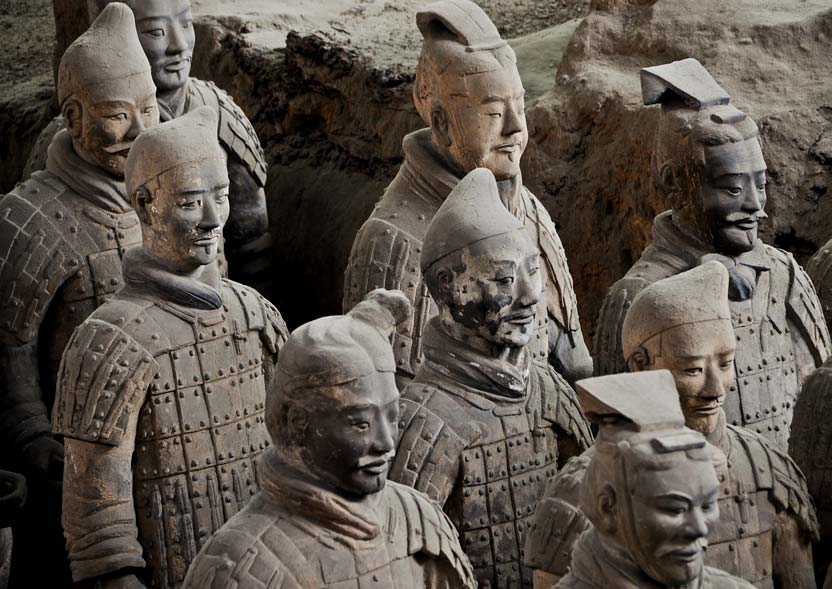
Welcome to Xi’an, a city in China’s Shaanxi Province that boasts a rich historical legacy. Steeped in ancient traditions and cultural treasures, Xi’an is home to six UNESCO World Heritage Sites that offer a captivating glimpse into the region’s glorious past. In this article, we’ll take you on a journey through these remarkable sites, delving into their historical significance, architectural splendor, and cultural heritage. So, let’s dive in!
One of the most extraordinary UNESCO World Heritage Sites in Xi’an is the Mausoleum of the First Qin Emperor. Nestled to the northeast of the city, this ancient burial complex houses the final resting place of Emperor Qin Shi Huang, the first emperor of China.
Imagine stepping into a world frozen in time as you explore the massive underground complex that covers an astounding 6.3 square kilometers (3.9 square miles). The highlight of the mausoleum is undoubtedly the legendary Terracotta Army, an army of life-sized clay soldiers and horses standing guard over the emperor’s tomb. Discovered in 1974 by local farmers, this archaeological marvel continues to astound visitors with its intricate details and historical significance.
As you wander through the three large pits, the most impressive being Pit 1, you’ll witness thousands of clay warriors arranged in battle formations. Marvel at the precision and craftsmanship that went into creating each soldier, with their unique facial expressions, hairstyles, and armor. It’s a breathtaking testament to the artistic prowess and military might of the Qin Dynasty.

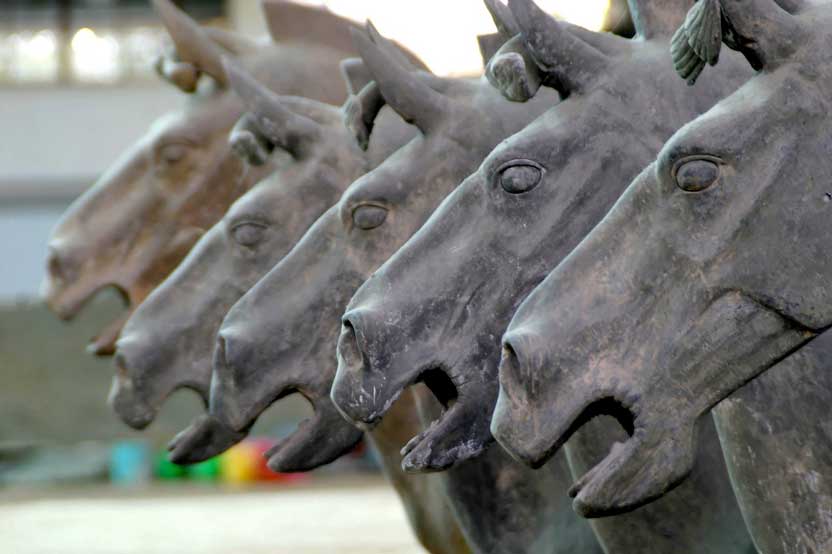
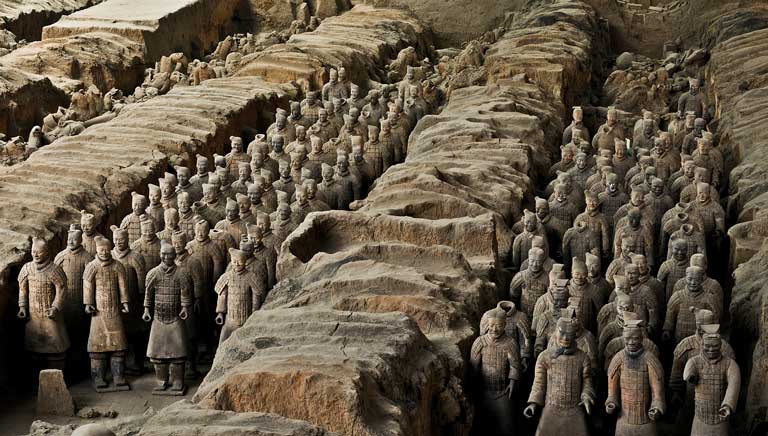
Step back in time to the Tang Dynasty, a golden age of Chinese history, as you explore the Site of Daming Palace. This UNESCO World Heritage Site played a pivotal role as the imperial palace complex during the Tang Dynasty, serving as the political and cultural epicenter of the empire.
Immerse yourself in the splendor of the past as you wander through the miniature model and remains of this expansive complex that at its greatest spanned approximately 3.2 square kilometers (1.23 square miles). Discover the grand halls, pavilions, gardens, and administrative buildings that once buzzed with activity, hosting significant events, ceremonies, and fostering artistic and intellectual endeavors.
The architecture of Daming Palace is a fascinating blend of traditional Chinese styles and influences from various regions. You’ll find yourself captivated by the intricate carvings, elegant archways, and meticulously landscaped gardens that adorned this imperial masterpiece. Gain insight into the cultural significance of the Tang Dynasty and appreciate the profound impact it had on China’s history and development.

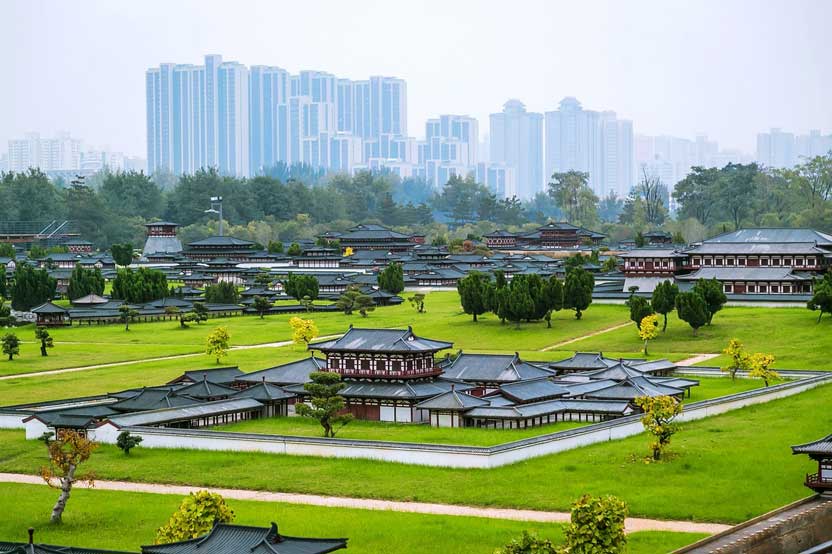
Prepare to be awestruck by the grandeur of the Site of Weiyang Palace, a UNESCO World Heritage Site that transports you to the glorious era of the Western Han Dynasty. As the largest palace complex in ancient China, covering a staggering 4.8 square kilometers (1.9 square miles), this site offers a unique glimpse into the governance and cultural splendor of the Western Han Dynasty.
Step into the shoes of ancient emperors as you explore the administrative heart of the empire. Imagine the hustle and bustle of political affairs as you traverse the remnants of this once-thriving complex.
Though the palace itself was lost to the ravages of time, meticulous archaeological excavations have revealed its layout and unveiled the intricate system that governed the Western Han Dynasty. Gain a deeper understanding of ancient Chinese politics, administration, and architectural prowess as you unearth the secrets of Weiyang Palace.
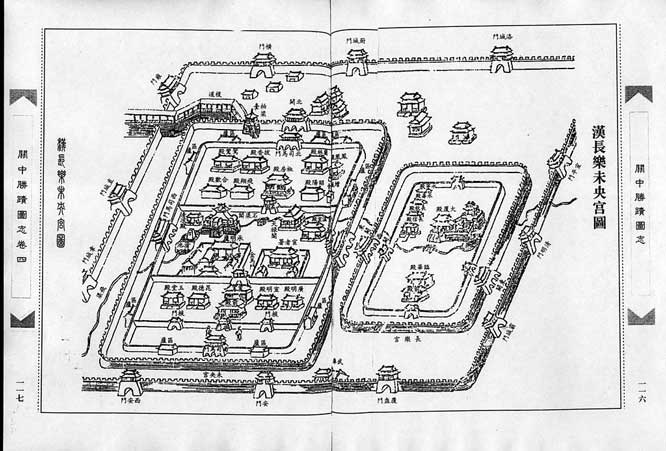
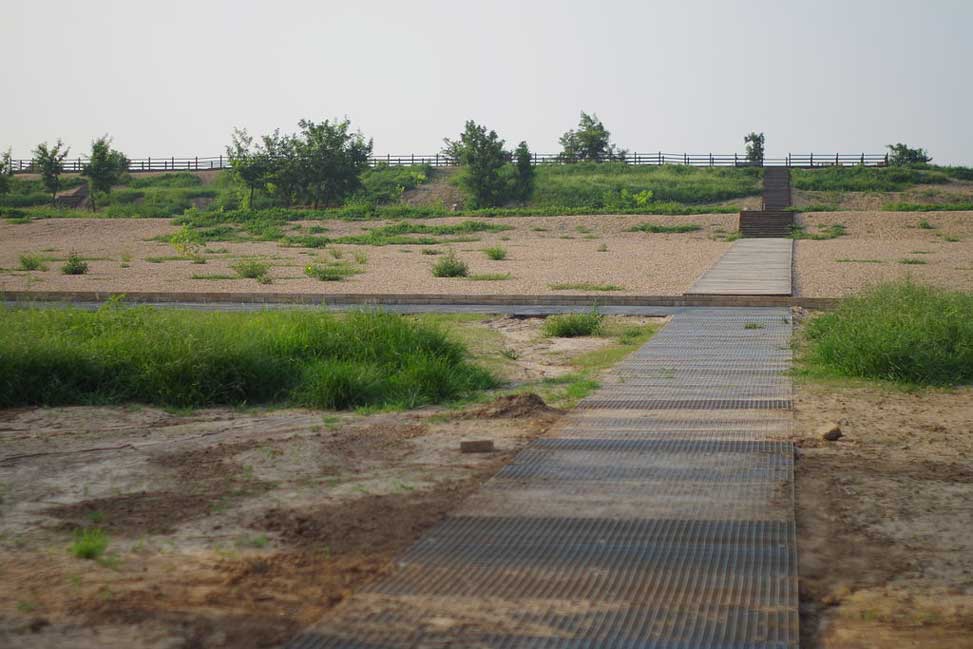
Xi’an is not only renowned for its imperial palaces but also for its sacred sites, including the magnificent Giant Wild Goose Pagoda. This UNESCO World Heritage Site, located in the southern part of the city, stands tall as a symbol of Xi’an’s rich Buddhist heritage and architectural excellence.
Journeying back to the Tang Dynasty, where Buddhism flourished, and prepare to witness the grandeur of this 7th-century pagoda. Rising to a height of 64.5 meters (211.6 feet), the Giant Wild Goose Pagoda’s imposing presence commands attention. Its square base and cylindrical body with fifteen stories showcase the distinctive design of traditional Chinese pagodas.
Originally built to house Buddhist scriptures brought from India by the eminent monk Xuanzang, the pagoda served as a place of worship, learning, and translation. Explore the surrounding Da Ci’en Temple complex, where serenity envelops you as you discover various halls, gardens, and ancillary structures. Take a moment to reflect on the spiritual significance and historical legacy preserved within these sacred grounds.
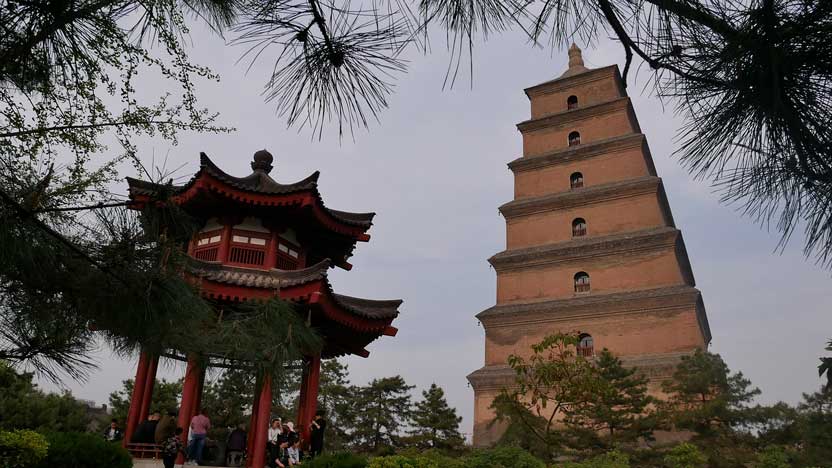
Prepare to be enchanted by the elegant beauty of the Small Wild Goose Pagoda, nestled within the Jianfu Temple complex. Although slightly overshadowed by its larger counterpart, this UNESCO World Heritage Site holds its own as an exquisite example of Tang Dynasty architecture and cultural heritage.
As you stand before the Small Wild Goose Pagoda, you’ll be struck by its graceful stature. Rising to a height of 43.4 meters (142.3 feet) with thirteen stories, this slender beauty showcases delicate brickwork and intricate carvings. It’s a testament to the ingenuity and artistry of the Tang Dynasty craftsmen.
The pagoda has undergone numerous restoration projects over the centuries, with the most recent in the 1960s. These efforts have ensured its preservation, allowing visitors to experience its original charm and appreciate its cultural significance. Take your time to explore the Jianfu Temple complex, where tranquility pervades every corner, inviting contemplation and appreciation of Chinese Buddhist culture.
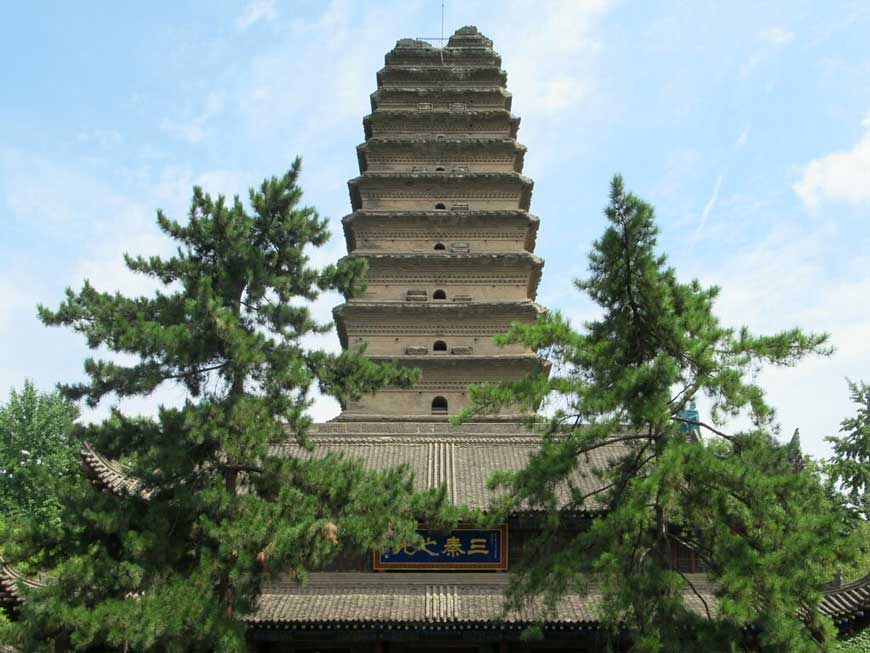
The Xingjiao Temple Pagoda, also known as the Monastery of Flourishing Teaching, holds great significance in Chinese history. Located in Xi’an, it was built in AD 669 to, lay to rest the remains of the celebrated 7th-century monk, Xuanzang, and is one of the eight renowned temples of the Tang Dynasty. The temple features a five-storied Buddhist relic pagoda that safeguards Xuanzang’s relics and the pagodas of his disciples, Kuiji and Yuance.
Although the original Tang dynasty stone pagoda still stands, the temple itself was tragically burnt down during the Qing dynasty and rebuilt during the Republic of China era. On June 22, 2014, Xuanzang’s pagoda and the small pagodas of his disciples were inscribed in the UNESCO World Heritage List as part of the Silk Roads: the Routes Network of Chang’an-Tianshan Corridor World Heritage Site.
The temple’s three courtyards and rich history make it a cherished attraction for those interested in ancient Chinese culture and the legacy of the esteemed monk, Xuanzang.
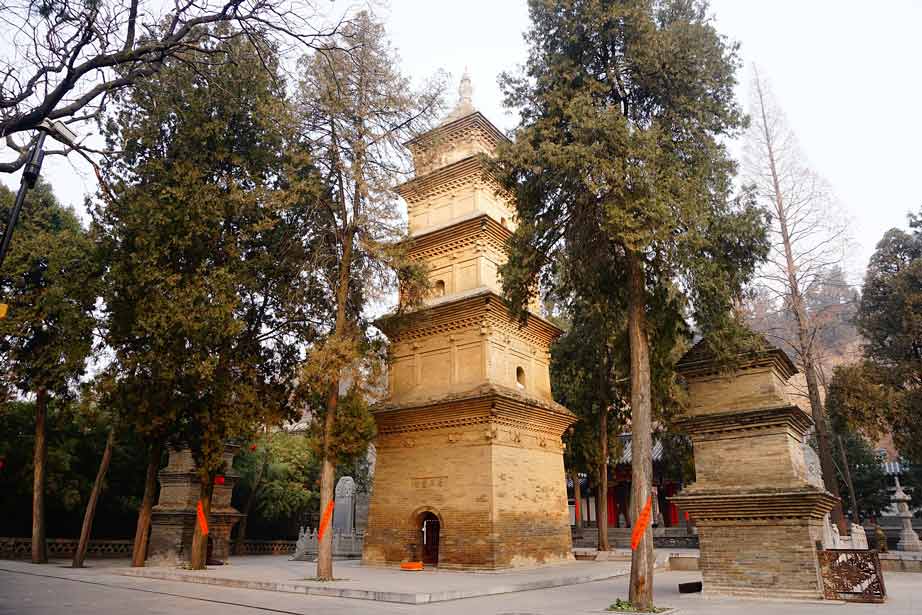
Xi’an’s UNESCO World Heritage Sites are more than just remnants of the past; they are gateways to ancient civilizations, embodying the grandeur, spirituality, and cultural legacy of China. From the awe-inspiring Mausoleum of the First Qin Emperor to the tranquil beauty of the Small Wild Goose Pagoda, these sites provide a fascinating journey through history. Whether you’re a history enthusiast or a curious traveler, the UNESCO World Heritage Sites of Xi’an offer an invaluable opportunity to immerse yourself in the rich tapestry of Chinese civilization. So, pack your bags, step back in time, and let Xi’an’s treasures captivate your imagination!

Related Articles:
Xi’an FAQs: Exploring China’s Ancient Capital City!
18 Qin Shi Huang Facts! [Explained]
The Terracotta Army: Exploring a Wonder of Ancient China!
Top 21 Facts about The Terracotta Army you need to know!
Giant Wild Goose Pagoda FAQs: Exploring this iconic pagoda!
The Small Wild Goose Pagoda: Answering 7 FAQs!
Xingjiao Temple Pagoda: Exploring a Symbol of the Silk Road!
UNESCO World Heritage Sites: The Ultimate Guide!
China’s UNESCO World Heritage Sites: A Complete A-Z List!